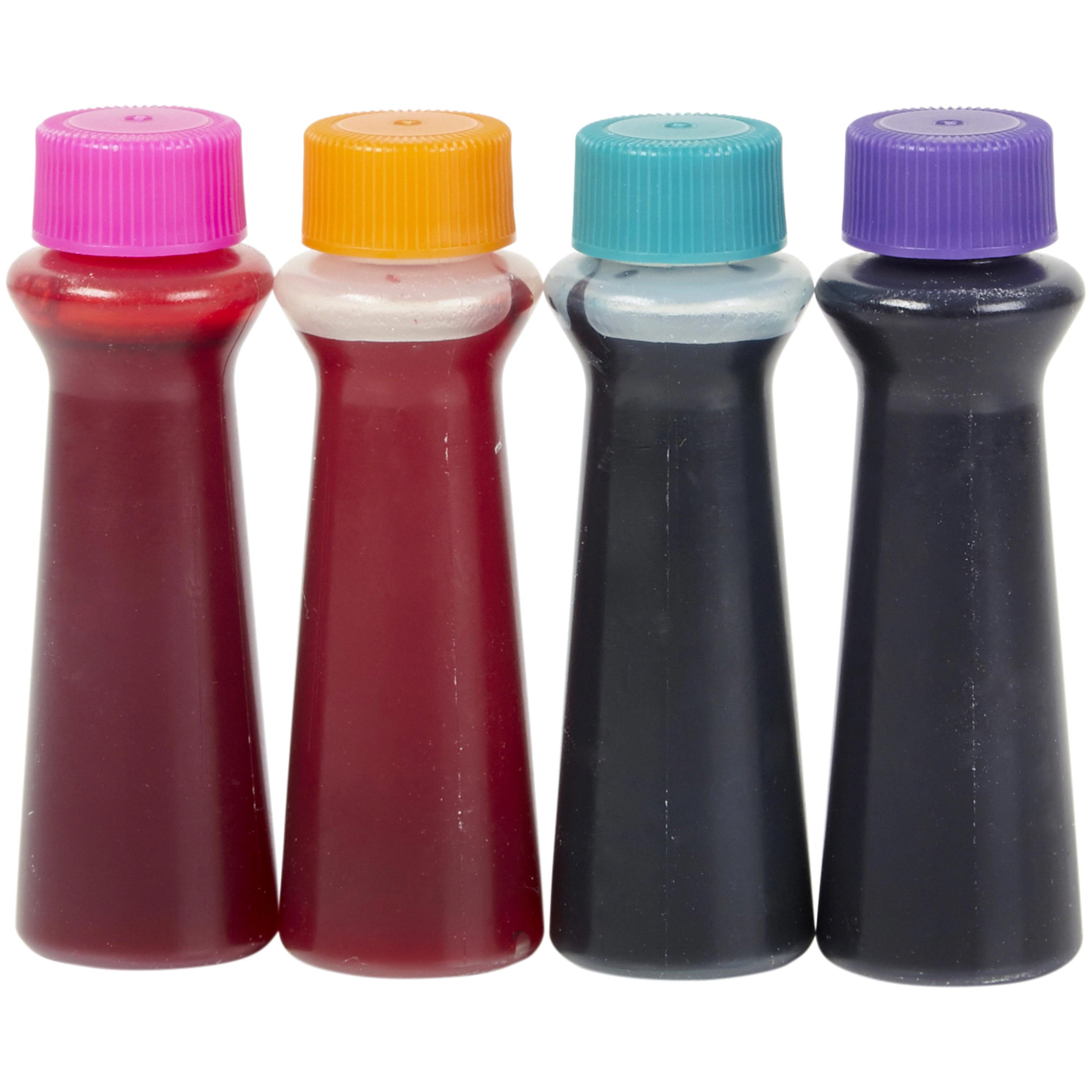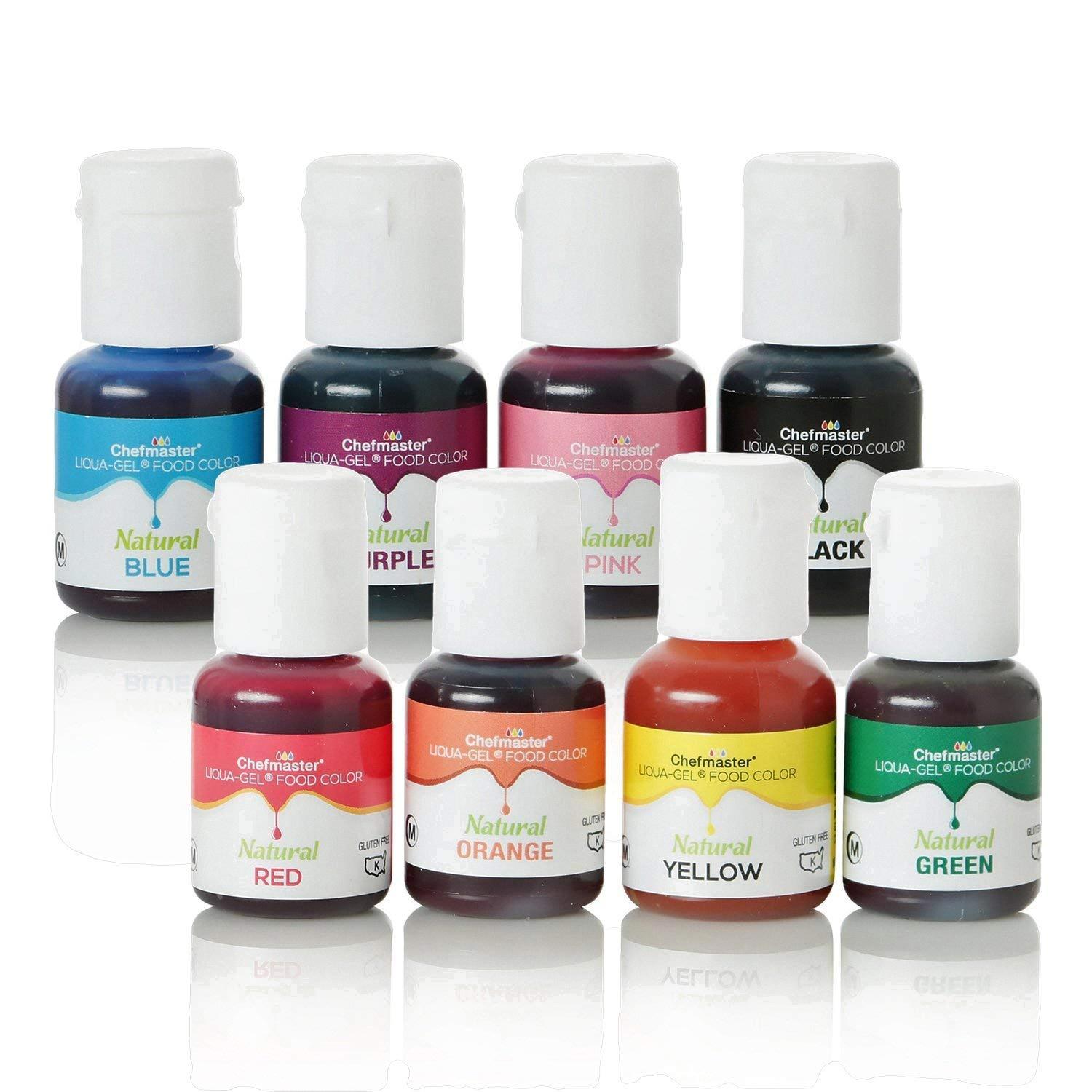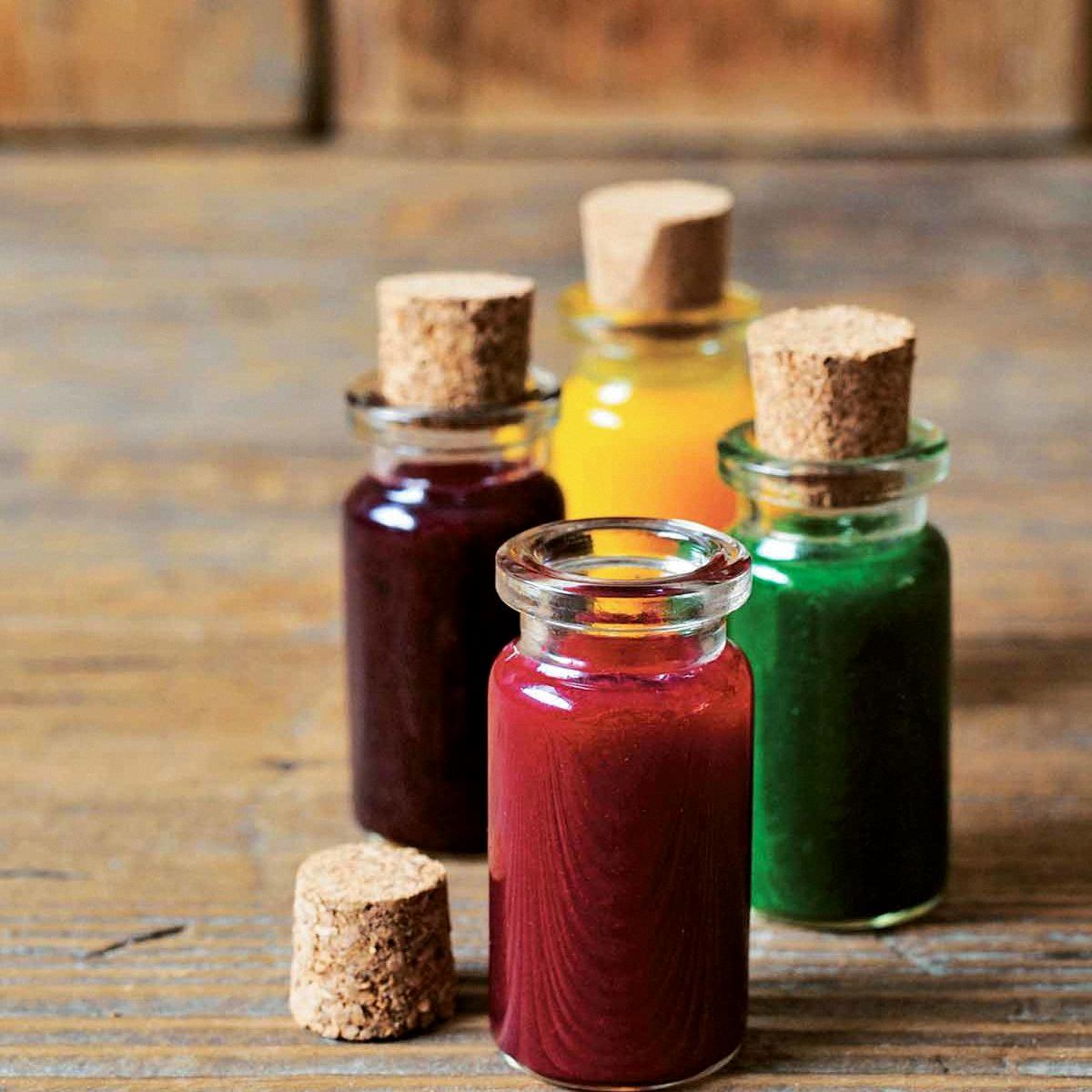Food coloring is a common ingredient used in many recipes to enhance the appearance and appeal of food items. However, it’s not uncommon for food coloring to accidentally spill on clothes, carpets, or other surfaces, leaving behind unsightly stains.
So, does food coloring stain? The answer is yes, it can. Food coloring contains pigments that can penetrate and adhere to fabrics, making them difficult to remove. Moreover, different types of food coloring may have varying degrees of staining power, with some being more challenging to remove than others.
The good news is that most food coloring stains can be effectively removed with the right cleaning techniques and products. Here are some tips for dealing with food coloring stains:
1. Act fast: The longer you wait to clean a food coloring stain, the harder it will be to remove. As soon as you notice the stain, blot it with a paper towel or clean cloth to remove any excess coloring.
2. Use dish soap and water: For most food coloring stains, a mixture of dish soap and water should do the trick. Apply a small amount of dish soap to the stain, and then rub gently with a damp cloth or soft-bristled brush. Rinse with water and repeat as necessary util the stain is gone.
3. Try vinegar or baking soda: For tougher stains, you may need to use a stronger cleaner. Vinegar or baking soda can be effective in removing food coloring stains. Mix vinegar or baking soda with water to make a paste, and then apply it to the stain. Let it sit for a few minutes before rinsing with water.
4. Pre-treat before washing: If the stained item is clothing or fabric, pre-treat the stain with laundry detergent before washing it as usual. Most fresh food dye stains will come out if you blot the area with a paper towel to remove excess food coloring, then apply a small amount of liquid detergent or dishwashing detergent to the spot on both sides of the fabric and wait 10-15 minutes, but don’t let the detergent dry.
Food coloring can indeed stain, but with the right cleaning techniques and products, you can effectively remove those stains. So, the next time you accidentally spill food coloring, don’t panic – just follow these tips to get rid of the stain and keep your clothes, carpets, and other surfaces looking as good as new.
Does Food Coloring Stain Clothes?
Food coloring stains can usually be removed from clothing with the right treatment. The first step is to act quickly and try to remove as much of the stain as possible with a clean cloth or paper towel. Then, pre-treat the stain with a laundry detergent or a mixture of vinegar and water. You can also try using baking soda and water to create a paste that you can apply to the stain. Let the cleaning solution sit on the stain for at last 30 minutes before washing the clothing as usual. If the stain is still visible after washing, repeat the treatment or consider using a stain remover product. It’s important to always check the care label on the clothing before attempting any stain removal methods and to test any cleaning solutions on a small, inconspicuous area of the fabric first.

Source: walmart.com
Is Washing Off Food Coloring Easy?
Food coloring can be easy or difficult to wash off, depending on several factors. For example, if the food dye is fresh and hasn’t had the chance to set in the fabric, it can be relatively easy to remove. However, if the dye has had time to dry or has been heat-set, it can be much more challenging to get out.
To remove a fresh food dye stain, start by blotting the area with a paper towel to remove any excess dye. Then, apply a small amount of liquid detergent or dishwashing detergent to the spot on both sides of the fabric and wait for 10-15 minutes. Avoid letting the detergent dry on the fabric, as this can make the stain harder to remove. After the wait time, rinse the fabric under cold water, and then wash it in the washing machine with a laundry detergent and the hottest water the fabric can handle.
In some cases, you may need to repeat this process several times to completely remove the stain. Additionally, some types of fabric, such as silk or wool, may require special care when treating food dye stains. In these cases, it may be best to take the garment to a professional cleaner.
Ultimately, the ease of removing food dye stains will depend on several factors, including the type of fabric, the age of the stain, and the type of dye used. However, with the right techniques and a bit of patience, it is possible to successfully remove most food dye stains from clothing and other fabrics.
Removing Food Coloring Stains
To remove food coloring stains, it is important to act quickly before the stain sets in. Start by mixing a solution of 1 quart lukewarm water, one-half teaspoon liquid hand dishwashing detergent, and one tablespoon ammonia. Soak the stained item in the solution for 15 minutes, making sure to fully submerge it. Then, gently rub the stain from the back using a soft-bristled brush or cloth to loosen it. After another 15 minutes of soaking in the solution, rinse the item thoroughly with clean water. If the stain remains, repeat the soaking and rubbing steps until the stain is gone. It is important to remember to never use hot water or bleach on food coloring stains, as this can cause the stain to set and become even more difficult to remove.
Does Food Coloring Stain Bathtubs?
Food coloring agents do not typically stain bathtubs. Most food coloring agents are water-soluble and will easily be washed away with water. However, it is recommended to clean the bathtub after using food coloring, especially if the bathtub is made of porous or unsealed materials, as some food colorings may leave a faint residue. It is also important to note that excessive use of food coloring may cause temporary discoloration, but this can be easily removed with a bathtub cleaner. as long as you clean your bathtub regularly, using food coloring durig bathtime should not cause any long-term staining or damage.
The Effects of Food Dye on Clothing
Food dye can be considered permanent on clothes, as the process of dying involves using vinegar and heat to lock in the color. This makes it difficult for the dye to come out in subsequent washes. However, over time and with multiple washes, some fading or discoloration may occur. It’s also important to note that the lasting effects of food dye on clothes can depend on various factors, such as the type of fabric, the amount of dye used, and the washing method. while food dye can be long-lasting on clothes, it’s still possibe for it to fade or change over time.

Source: beckarahn.com
Removing the Hardest Color Stains
The answer to this question can vary depending on the nature of the stain and the material it has been absorbed into. However, generally speaking, some of the hardest color stains to remove are red wine, tomato sauce, and chocolate stains. This is because these stains contain strong pigments that can penetrate deep into fabrics and oter porous surfaces, making them difficult to lift with regular washing or cleaning methods. Additionally, these stains can be made worse if they are not treated immediately, as the pigments can set in and become more stubborn over time. To effectively remove these types of stains, it is recommended to use specialized stain removers, pre-treatments, or to seek professional cleaning services.
Which Food Coloring Does Not Stain?
Color Garden® pure natural food colors are the type of food coloring that does not stain. Unlike synthetic food colors that can leave stubborn stains on clothes, teeth, and skin, Color Garden® food colors are made from 100% plant-based ingredients that are gentle and safe to use. These natural food colors are derived from fruits, vegetables, and other plant sources, and do not contain any artificial dyes or chemicals. As a result, they are easy to clean and wash out of clothes, utensils, and other surfaces without leaving any lasting marks or discoloration. Whether you are baking, decorating, or coloring foods, you can use Color Garden® food colors with confidence, knowing that they are non-staining, non-toxic, and eco-friendly.
The Dangers of Using Food Coloring
There are several reasons why we should avoid using artificial food coloring. Firstly, many food dyes have been linked to negative health effects. For example, some studies have suggested that food dyes may cause hyperactivity in children, while others have linked them to allergic reactions and even cancer. Additionally, some people may be particularly sensitive to certain food dyes, and consuming them could trigger unpleasant symptoms.
Furthermore, artificial food coloring provides no nutritional value whatsoever. In other words, it is simply a way to make food look more appealing, without proviing any actual benefits to our bodies. This is particularly concerning given that many people today already consume too many processed and unhealthy foods, which can contribute to a range of health problems.
It is worth noting that there are many natural alternatives to artificial food coloring that can be used instead. For example, certain spices and fruits can be used to add color to food, while still providing important nutrients and health benefits. then, there are many good reasons to avoid using artificial food coloring, and to opt for more natural and nutritious alternatives instead.
How Long Does Food Dye Last on the Skin?
Food dye can stay on your hand for an average of 24 to 36 hours, depending on a few factors. The type of food coloring used, the amount applied, and the frequency of washing your hands can affect how long it remains on your skin. Most food coloring is water-soluble, wich means that it can be easily washed off with soap and water. However, if the dye is oil-based or contains synthetic ingredients, it may take longer to fade away. Additionally, if you frequently touch things or wash your hands, the dye can wear off more quickly. it’s important to wash your hands regularly with soap and water to prevent the spread of germs and to remove any lingering food dye.

Source: amazon.com
Do Food Stains Disappear Over Time?
Food stains can be stubborn and difficult to remove, but with the right techniques, they can be eliminated. The first step is to treat the stain as soon as possible. If the stain is fresh, blot it gently with a clean cloth or paper towel to remove as much of the excess food as possible. Avoid rubbing the stain, as this can cause it to spread and set into the fabric.
Next, pre-treat the stain with a stain remover or a mixture of dish soap and water. Apply the solution directly to the stain and let it sit for a few minutes. Then, use a soft-bristled brush to gently work the solution into the fabric. Rinse the fabric thooughly under cold running water.
If the stain persists, try soaking the fabric in a solution of cold water and oxygen-based bleach for several hours or overnight. Be sure to follow the instructions on the product label and test the solution on an inconspicuous area of the fabric first to avoid damage.
Additionally, it’s important to avoid drying the stained fabric in the dryer until the stain is completely removed. Heat can set the stain and make it much more difficult to remove.
While food stains can be challenging to remove, with prompt and diligent treatment, they can often be eliminated.
Making Food Coloring Permanent on Clothes
Making food coloring permanent on clothes can be achieved through a simple process. First, mix equal parts of white vinegar and water in a small bowl. This solution will help to set the color in the fabric. Next, add a few drops of food coloring to the solution and stir well. If you want to make a darker shade, add more food coloring.
Then, place the garment in the solution and let it soak for about 30 minutes. Make sure to stir the garment occasionally to ensure that the color is evenly distributed. After 30 minutes, remove the garment from the solution and rinse it with cool water until the water runs clear.
Wash the garment in the washing machine with cold water and a mild detergent. Do not use hot water as this can cuse the color to fade. Once the garment is washed, hang or lay it flat to dry. The vinegar solution should help to set the color, making it more permanent on the fabric.
Removing the Most Difficult Food Stains
The hardest food stains to remove are typically those that are deeply pigmented or acidic, as they tend to penetrate the fibers of fabrics and set quickly. Some of the most stubborn food stains include red wine, tomato sauce, curry, chocolate, and berries. These stains can be particulaly challenging to remove from light-colored fabrics or delicate materials like silk or wool. To effectively remove these stains, it’s important to act quickly and use the appropriate cleaning method for the type of fabric and stain. In some cases, it may be necessary to seek professional cleaning services to fully remove the stain without damaging the fabric.
Does Water Remove Food Coloring?
Food coloring is a water-soluble dye, which means it can dissolve in water. Therefore, it is possible to remove food coloring from your skin or other surfaces with water. However, the effectiveness of water aone will depend on several factors, such as the type and amount of food coloring, the surface material, and how long the dye has been there. In some cases, you may need to use soap or other cleaning agents to help break down and remove the dye. It’s worth noting that some food coloring, particularly red and blue dyes, may stain more stubbornly than others. If you’re struggling to remove food coloring with water alone, you may need to try a combination of methods, such as scrubbing with soap, using vinegar or lemon juice, or even using a specialized stain remover.

Source: leitesculinaria.com
Will Food Dye Stain My Sink?
The answer to this question depends on the material your sink is made of. If your sink is made of non-porous materials such as stainless steel, then it is less likey to stain from food dye. However, if your sink is made of porous materials such as porcelain, fiberglass, acrylic, or stone, then it is more likely to absorb the dye and leave a stain. It’s best to avoid dyeing directly in your sink if it’s made of these materials. Instead, consider using a disposable container or dyeing your food in a bowl or dish before transferring it to your sink for cleaning. If you do happen to spill food dye in your sink, it’s important to clean it up as soon as possible with a non-abrasive cleaner to prevent any possible staining.
Should I Add Food Coloring to My Child’s Bath?
Certainly, you can put food coloring in your kids’ bath, but there are a few things to consider before doing so. First of all, it’s important to note that food coloring is not specifically designed for use in bath water or on skin, so it’s always best to be cautious when usng it in this way.
Before adding any food coloring to your child’s bath, it’s a good idea to test it out on a small area of skin to make sure there are no adverse reactions. Some kids may be more sensitive to certain ingredients than others, so it’s always better to be safe than sorry.
Assuming that your child doesn’t have any negative reactions to the food coloring, you can go ahead and add a few drops to the bath water to create a fun and colorful experience. Keep in mind that a little goes a long way, so you don’t need to add too much to achieve the desired effect.
It’s also worth noting that food coloring can stain clothing, towels, and other fabrics, so be sure to rinse your child off thoroughly before allowing them to dry off with a towel or get dressed. using food coloring in your child’s bath can be a fun and creative way to make bath time a little more exciting, as long as you take the necessary precautions and use it in moderation.
Conclusion
Food coloring can cause stains on clothing, fabric, and other surfaces. However, with proper cleaning techniques and the right cleaning products, you can easily remove these stains. It is important to act quickly and pre-treat the stain before washing it as usual. For tough stains, you may need to use stronger cleaning agents such as vinegar or baking soda. by following the steps outlined in this article, you can effectively remove food coloring stains and keep your clothes and surfaces looking clean and vibrant.
